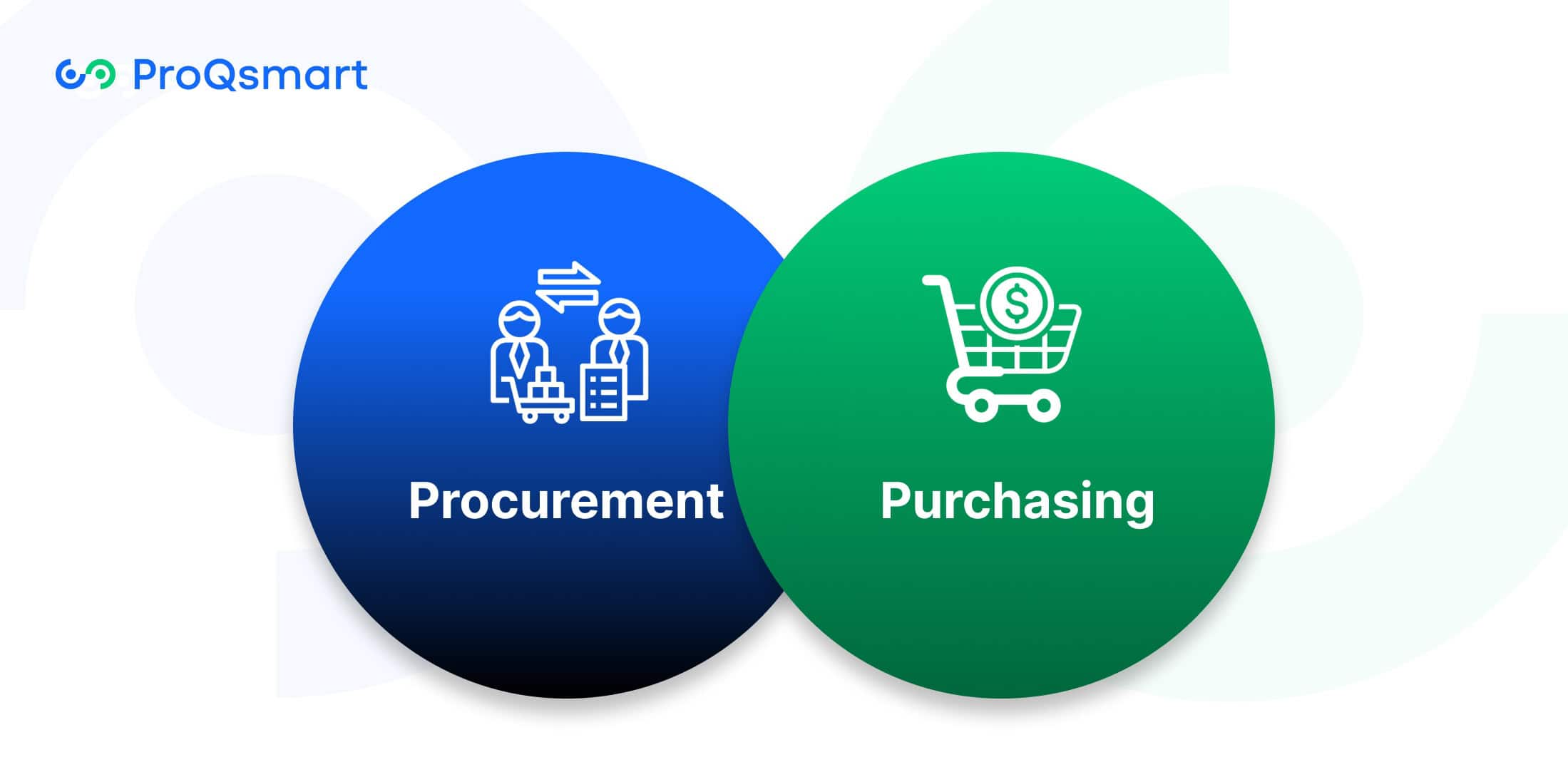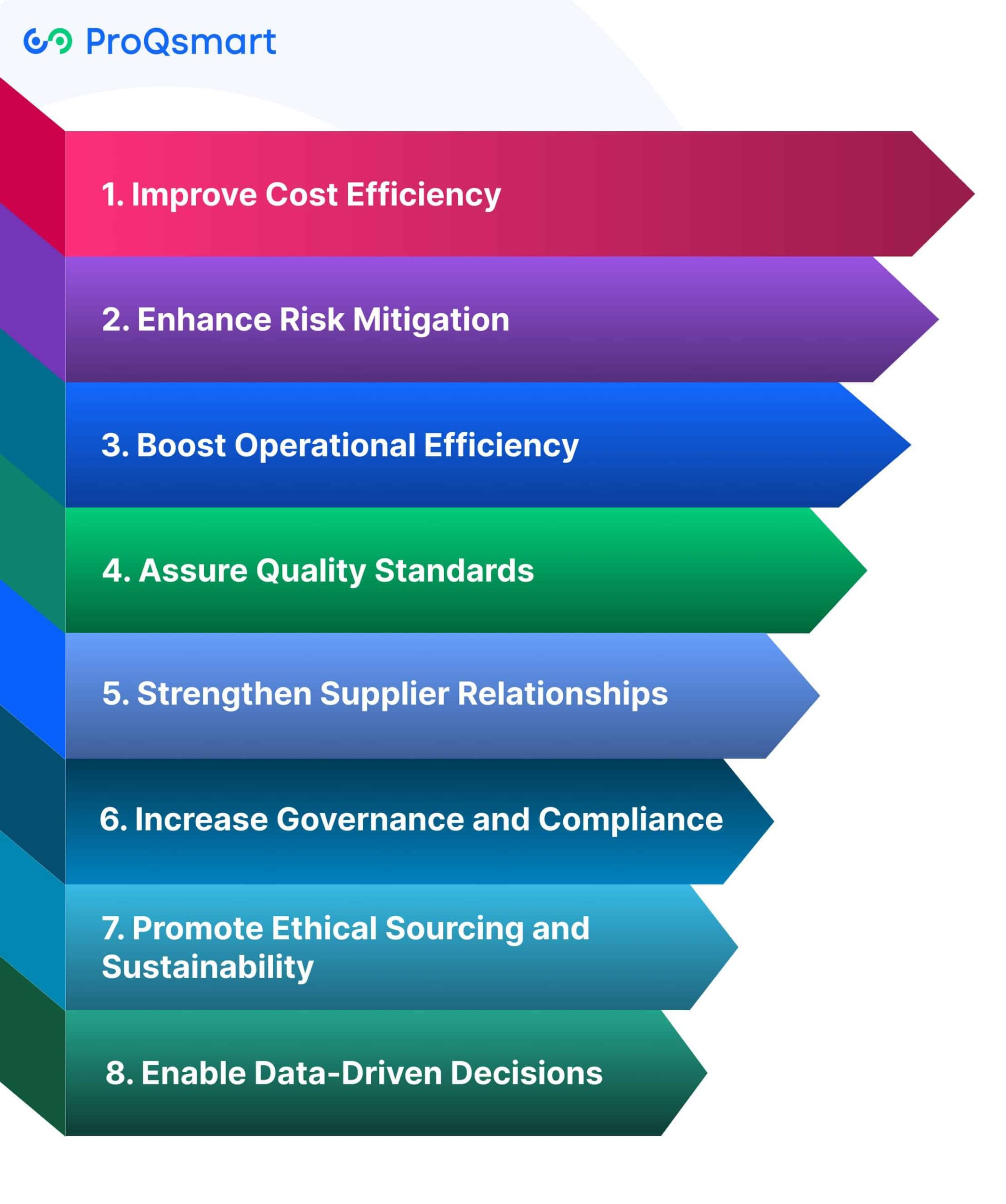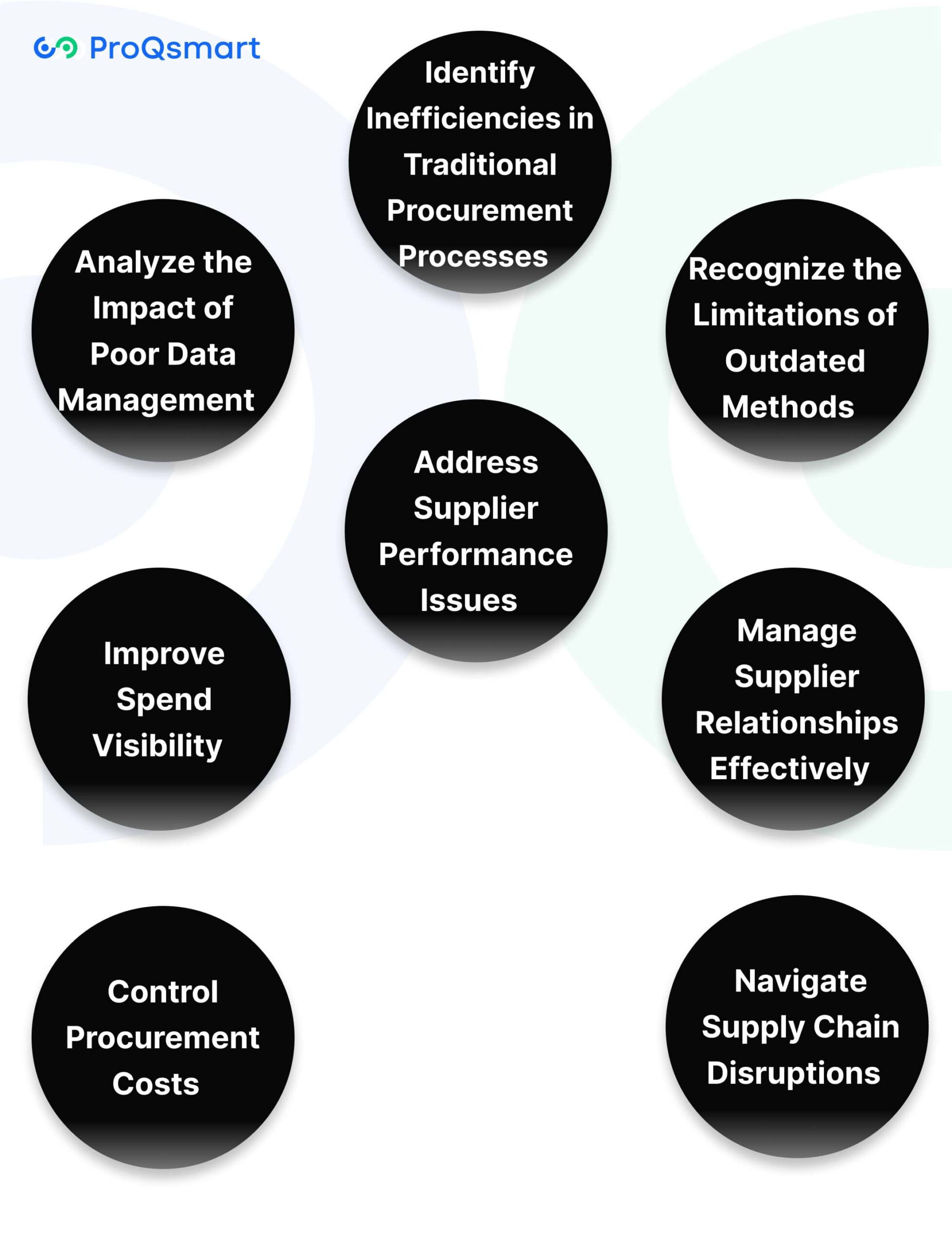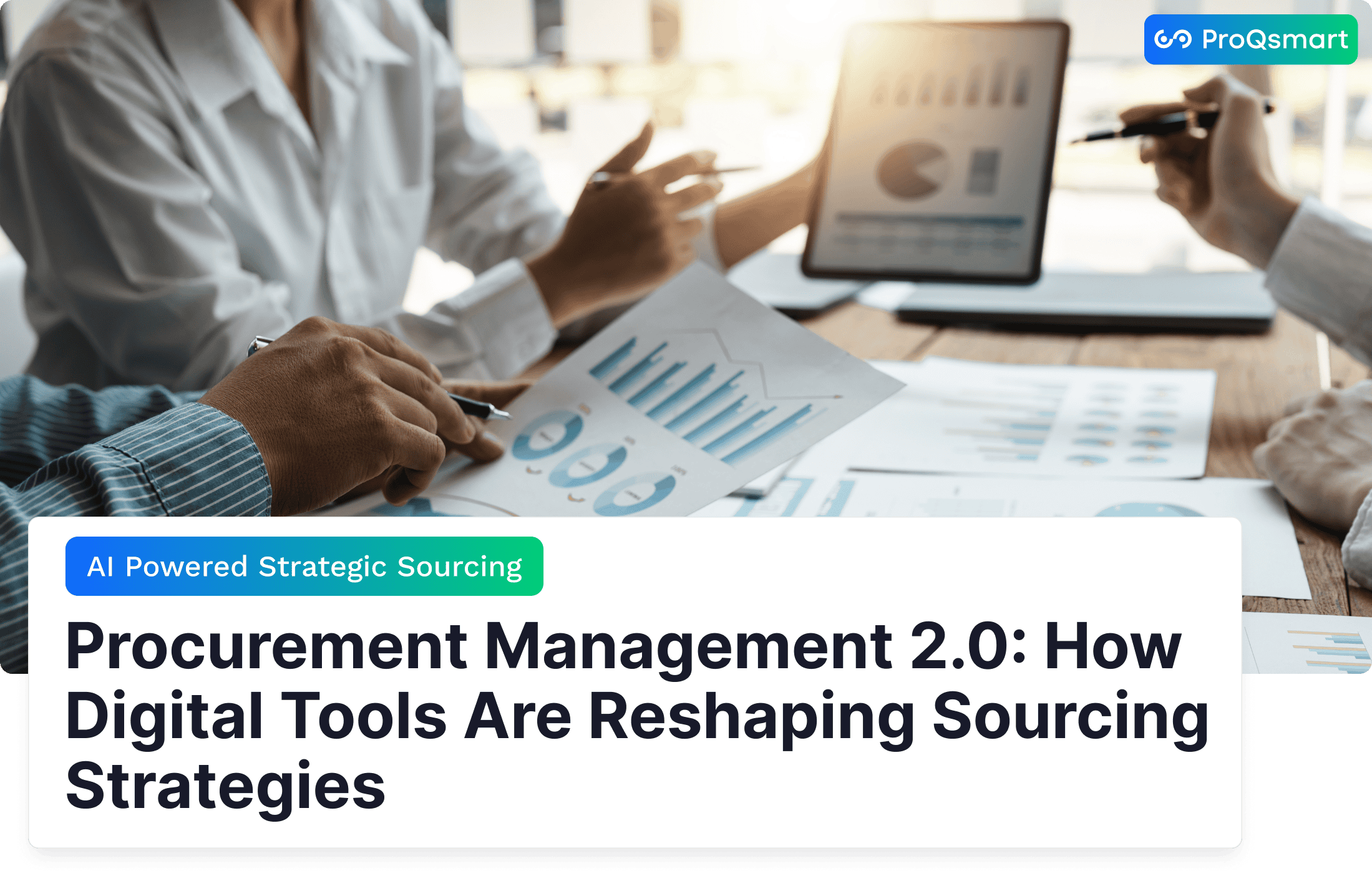Procurement is no longer just about cost-cutting and supplier negotiations—it’s evolving into a data-driven, technology-powered function that drives strategic business outcomes. Organizations need more than traditional procurement methods to stay agile, ensure compliance, and build resilient supply chains.
Digital tools are transforming procurement by automating workflows, enhancing supplier visibility, and providing real-time insights that empower smarter decision-making. Whether it’s leveraging AI for supplier selection, optimizing spend with predictive analytics, or using cloud-based procurement platforms for seamless collaboration, technology is redefining how sourcing strategies are executed.
This article explores how procurement professionals can harness digital tools to improve efficiency, mitigate risks, and create long-term value. From streamlining supplier management to driving sustainability goals, discover how Procurement 2.0 is shaping the future of sourcing.
What is Procurement Management?
Procurement management is a highly strategic process that involves the entire procurement lifecycle. It encompasses the management behind the purchase of important products, materials, goods, and services that allow a company or organization to function smoothly and effectively. It’s far more than just purchasing goods; it involves forecasting, controlling, and directing various business processes to acquire the necessary resources in the most efficient manner, focusing on quality and timely delivery through effective procurement management tools.
As one of six key areas that make up supply chain management, procurement management connects internal needs with external suppliers. This connection further facilitates a smooth and timely flow of goods and services needed for business operations. By implementing a good procurement management plan, organizations can enhance their procurement workflows, ensuring that they meet their operational objectives efficiently.
In addition, the use of modern procurement management systems can significantly improve the overall procurement process. These systems streamline procurement activities, enabling teams to manage vendor relationships and supplier contracts effectively. Besides, by focusing on efficient procurement processes, businesses can drive better procurement performance and achieve their strategic goals.
Procurement vs. Purchasing

While procurement and purchasing are sometimes used interchangeably, the two terms actually describe very different roles. Procurement is a highly strategic part of the business—from sourcing and onboarding suppliers to negotiating contracts and managing supplier relationships.
In contrast, purchasing is the narrower, operational concern with the management of the act of buying goods or services. Procurement strategy centers around choosing a long-term supplier of custom machinery.
|
Category |
Procurement |
Purchasing |
|---|---|---|
|
Objective |
Strategic sourcing, supplier management, cost optimization. |
Transaction execution, acquiring goods and services as needed. |
|
Focus Area |
Long-term supplier relationships, risk management, compliance. |
Short-term order fulfillment, budget adherence. |
|
Decision-Making |
Data-driven, based on total cost of ownership (TCO) and value. |
Focuses on price, availability, and immediate needs. |
|
Supplier Involvement |
Research, evaluation, negotiation, and relationship building. |
Engages with pre-approved suppliers for purchases. |
|
Key Activities |
Supplier selection, contract negotiation, compliance, cost control. |
Purchase order processing, invoice approvals, payment execution. |
|
Technology Used |
E-sourcing platforms, procurement analytics, contract management. |
ERP systems, procurement software for order tracking. |
|
Risk Management |
Supplier risk assessment, regulatory compliance, supply chain disruptions. |
Managing order delays, incorrect shipments, and inventory shortages. |
|
Cost Control |
Strategic cost-saving measures like bulk discounts and supplier consolidation. |
Budget adherence, approval processes, and cost tracking. |
|
Performance Metrics |
Supplier performance, long-term cost reduction, contract efficiency. |
Order accuracy, fulfillment speed, transactional efficiency. |
Why Procurement Management Matters Now
As supply chains become more complex, procurement management plays a critical role in mitigating risks such as rising material costs, geopolitical instability, and logistical disruptions. Supply chain disruptions alone can cost companies up to 10% in annual revenue, making proactive procurement essential for business continuity.
Beyond risk reduction, procurement is a key driver of competitive advantage, influencing 40-80% of a company’s total costs. It’s no longer just about cost-cutting—it’s about enabling long-term business success. Advanced procurement solutions like ProQsmart leverage AI to track budgets in real time, monitor supplier performance, and automate workflows, helping businesses make data-driven decisions while improving supplier relationships.
Similarly strategic procurement is also shaping how companies respond to market disruptions and drive sustainability. Besides, by investing in smarter procurement strategies today, organizations can enhance operational efficiency, prevent costly risks, and gain a competitive edge in their industry.
The Procurement Management Process
A solid procurement management process is a necessity for all organizations. It aids in optimizing spending to achieve operational goals more efficiently and building mutually beneficial relationships with diverse suppliers. In some industries, procurement costs exceed 50% of revenue.
By taking a more efficient, flexible approach, businesses of all kinds can cut out wasted processes and save $1 trillion annually. With advanced tools and data-driven technologies, businesses can unlock procurement’s strategic potential, bringing the function in line with wider business goals.
1. Identify Needs and Plan
-
- Identify organizational requirements by reviewing historical data and projecting future demand.
- Create detailed specifications to align with operational requirements.
- Create a thoughtful procurement strategy that emphasizes budgetary fit and advancement of strategic objectives.
ProQsmart’s budget-driven procurement management software feature provides built-in, real-time tracking to help you align every purchase more closely with your budgetary goals.
2. Source and Select Vendors
The sourcing process typically includes drafting RFx documents to request proposals or bids from vendors. Using criteria such as delivery on time, cost savings, and responsiveness to performance creates a more robust result.
When we prioritize our supplier diversity, we promote innovation and resilience. ProQsmart makes it easy to collaborate with vendors and manage procurement documents for full transparency and compliance.
3. Negotiate and Manage Contracts
Well-defined terms help to safeguard your business’s interests when negotiating contracts. Better management leads to better compliance, on-time delivery, and tracking of performance.
Open, honest, and strong communication allows both parties to build a true partnership that delivers sustainable long-term value.
4. Execute Purchases Efficiently
-
- Clearly define purchase orders with detailed specifications.
- Use procurement platforms for seamless processes.
- Regularly monitor order fulfillment.
5. Ensure Receiving and Quality Control
Have a process in place to inspect goods when they are received to ensure they match purchase orders. A three-way match process (PO, invoice, packing slip) eliminates errors.
Correct any issues right away in order to hold suppliers accountable.
6. Reconcile and Process Payments
Timely procurement processing is critical to timely payments. Aligning procurement with accounts payable is essential. Invoicing accuracy avoids unnecessary disputes, and payment on time helps foster supplier confidence.
7. Review Performance and Manage Suppliers
-
- Delivery accuracy and timeliness.
- Quality of goods and responsiveness to concerns.
- Competitiveness and cost-effectiveness.
ProQsmart’s procurement management software includes a supplier performance monitoring feature with real-time alerts to help you avoid adverse selections and make more informed procurement decisions.
Benefits of Effective Procurement Management

Effective procurement management is more than a process; it’s a smart, strategic approach that maximizes value across the entire procurement lifecycle. By utilizing procurement management software and committing to more robust procurement practices, companies can realize substantial benefits that positively impact bottom line performance and sustainable success.
1. Improve Cost Efficiency
As procurement costs typically represent up to half of a firm’s top line revenue, pursuing costs savings becomes a matter of survival. Reducing burdens on the procurement process can drastically shorten overall project timelines. Moreover, by formalizing purchase requisition and approval workflows, you can reduce bottlenecks by days or even weeks.
Therefore, this significantly reduces unnecessary spending and reduces waste, costing organizations thousands of dollars each year. For instance, looking for substitute materials or haggling with vendors for bulk pricing can help save on procurement costs.
2. Enhance Risk Mitigation
Effective procurement management proactively mitigates risks by diversifying supplier bases and conducting rigorous contract pre-award evaluations. It correspondingly protects businesses from being caught off guard by any interruptions, like a delayed supplier or missing materials.
New automated tools, harnessed to streamline order processing and fulfillment, have eliminated delays and increased order delivery reliability.
3. Boost Operational Efficiency
Streamlined workflows, including automated disbursement of payment through a virtual card, enable faster order fulfillment and better project timelines. Smart procurement plays a critical role in ensuring day-to-day operations run smoothly.
For example, automated systems eliminate manual errors, freeing up teams to work on more strategic initiatives.
4. Assure Quality Standards
Providing consistent, high-quality experiences is critical. Procurement teams make this happen by holding ongoing supplier reviews and as well as establishing quality standards.
This strategy can also help ensure raw materials and finished products are most aligned with an organization’s needs while reducing risk to reliability.
5. Strengthen Supplier Relationships
Healthy supplier relationships promote shared innovation and development. Continuous engagement pushes procurement teams to discover exciting new products and emerging new markets.
By attending industry conferences and doing their own market research, they learn extremely helpful details. This not only strengthens local partnerships, but it incentivizes potential suppliers to make your organization’s priorities more central to their work.
6. Increase Governance and Compliance
Compliance with regulatory standards is a must. Effective procurement management helps them stay on top of industry regulations, avoiding costly legal mistakes.
Accountability is boosted through clear documentation and transparent workflows.
7. Promote Ethical Sourcing and Sustainability
Sustainable procurement practices prioritize ethical sourcing and reducing environmental impact while promoting social responsibility. Implementing a good procurement management plan, such as sourcing from certified suppliers, meets sustainability goals and attracts conscious consumers.
8. Enable Data-Driven Decisions
Access to real-time, up-to-date and granular data helps us make the smartest possible decisions. With the help of AI, procurement teams are able to understand market trends, predict demand, and manage inventory more efficiently.
This strategic use of data creates greater efficiency and helps make procurement a leading driver of business success.
Challenges in Procurement Management

Procurement management is frequently burdened by challenges that can hinder productivity, increase expenses, and undermine organizational objectives. Implementing an effective procurement management solution means having a realistic view of inefficiencies, legacy practices, and the data’s vital role in informing procurement decisions.
Identify Inefficiencies in Traditional Procurement Processes
We know that traditional procurement processes that depend on manual, time-consuming, paper-based tasks stall operations and add unnecessary costs. Inconsistent documentation makes it easy to overlook details that result in costly errors, while paper-based purchase orders and approvals slow down the entire process.
These manual, error-prone inefficiencies drain productivity and reduce the ability to take advantage of cost-saving opportunities. Unless organizations embrace new, more streamlined workflows, they’ll find themselves losing important time and as well as money.
Recognize the Limitations of Outdated Methods
Even the most antiquated processes, like manually vetting a new vendor or checking compliance, can be less productive. These manual processes are time intensive and subject to human error leading to greater compliance risk.
For example, inefficient automation during supplier pre-qualification processes can result in overlooking regulatory requirements, leaving organizations vulnerable to fines.
Analyze the Impact of Poor Data Management
Data management is the foundation of good procurement. Inaccurate data erodes supplier relations, can result in lack of trust, and cause missed opportunities due to counterproductive decision-making.
Additionally, 86 percent of procurement leaders acknowledge there are gaps in their teams’ capabilities. To improve these operational outcomes, it is important that companies are building robust systems for documenting compliance and tracking supplier performance.
Address Supplier Performance Issues
Supplier performance has a direct impact on procurement success. Missed delivery deadlines, lack of quality control, or poor communication can slow down the entire operation.
Regular performance evaluations, augmented by advanced platforms such as ProQsmart, take the guesswork out of the equation and deliver actionable insights. Similarly, smart procurement with ProQsmart allows organizations to monitor suppliers in real-time, track compliance with contract terms, and help develop a historically dependable supplier base.
Improve Spend Visibility
This limited transparency in government spending leads to inefficiencies such as duplicate purchases across agencies. Dark purchasing, where goods or services go through approval processes, tends to lead to budget overruns.
Digital tools such as ProQsmart improve spend visibility by providing clear and comprehensive tracking of every step of the procurement process. This significantly helps organizations find opportunities to purchase in bulk or negotiate better terms with their suppliers.
Manage Supplier Relationships Effectively
Cost savings and operational success starts with strong supplier relationships. Fostering trust and collaboration is essential to guarantee that suppliers are working in tune with organizational objectives.
ProQsmart enhances these mutually beneficial relationships by ensuring efficient communication and offering automations to streamline procurement workflows, generating better results for both buyers and suppliers.
Control Procurement Costs
Poor management of spend increases the risk of wasted resources. For instance, poor contract management by itself can lead to a 9% loss in revenue.
ProQsmart solves this with automatic contract management, keeping procurement in line with budgets and cutting out wasteful spending. Its AI-powered tools deliver actionable insights to help organizations achieve measurable cost savings.
Navigate Supply Chain Disruptions
These disruptions to the supply chain like delays or shortages can stop their operations. To avoid being blindsided, organizations need to take proactive approaches to manage and mitigate risks.
ProQsmart’s real-time collaboration tools give teams the power to pivot sourcing plans on the fly, guaranteeing no disruption, all while remaining compliant.
Procurement Management Best Practices
Smart, efficient procurement management software can be a major force in promoting operational efficiency and reaching wider strategic business objectives. Through the adoption of a good procurement management plan, organizations can simplify operations, save money, and encourage sustainability throughout their procurement activities. Below, we discuss those strategies in detail and how they can be applied in practice to drive results.
1. Create a Strategic Procurement Plan
The basis for good procurement management starts with a strategic procurement plan. This procurement process starts with defining all company-wide policies that should regulate how and where your business spends money. Additionally articulating and electronically documenting these policies helps ensure that procedures and controls are uniformly implemented.
Routine policy reviews and updates are essential to remaining in line with organizational objectives and evolving market conditions. Incorporating supplier-specific strategies within that plan will better position the organization to achieve its short-term and long-term goals.
2. Cultivate Strong Supplier Partnerships
Supplier relationship management is essential to getting all possible value from a supplier while controlling risk. Through supplier relationship management principles and tools, procurement professionals will improve both supplier collaboration and performance.
Ongoing monitoring of suppliers, as opposed to a single review, keeps collaborations forward-looking and focused on delivering outcomes in line with the contract. Strengthening these relationships further assists in minimizing future supply chain interruptions.
3. Emphasize Data-Informed Decision Making
With the help of data analytics, organizations can make smarter, more strategic sourcing decisions. This involves examining previous spending trends, supplier performance data, and current market conditions.
For instance, AI-powered platforms such as ProQsmart allow for continuous data tracking, supplier performance tracking, and capital expenditure sourcing in real-time. These insights help procurement teams uncover opportunities to save costs and make more informed supplier selection decisions.
4. Standardize and Automate Workflows
Automation reduces tedious busywork like purchase order creation, order approvals, and three-way matching. Tools such as ProQsmart work to automate complicated workflows and ensure compliance through consistent maintenance of auditable sourcing data.
This minimizes manual errors, accelerates overall procurement timelines, and allows resources to be reallocated toward more strategic efforts. In one case, formalizing purchase requisition workflows saved weeks on a project’s timeline.
5. Uphold Governance and Compliance
Governance and compliance are key to procurement management best practices. Performing compliance, financial, and performance audits to monitor conformance with regulatory standards and organizational policies is essential.
By addressing gaps in the procurement process, we get in front of problems such as maverick spending, which is responsible for billions of dollars in waste. Adopting best practices have shown to cut maverick spending by as much as 90%, increasing accountability across the board.
6. Fostering Collaboration Among Stakeholders
By fostering collaboration between procurement teams, suppliers, and internal stakeholders, you can help drive efficiency. Platforms such as ProQsmart support real-time collaboration between stakeholders, fostering greater transparency and informed decision-making.
With a holistic approach that aligns procurement strategies with organizational budgets and goals, teams can ensure effective integration across departments.
7. Adopt Digital Tools and Technology
Embracing digital tools helps to further modernize procurement processes. Begin with an evaluation of existing inefficiencies and a clear idea of the tools that will help you achieve your desired outcomes.
Training teams on new platforms such as ProQsmart helps make that transition seamless. Below is a comparison of traditional vs. Digital procurement methods:
|
Aspect |
Traditional Procurement |
Modern Digital Procurement |
|---|---|---|
|
Vendor Selection |
Time-consuming |
Efficient with AI-driven tools |
|
Transaction Processing |
Slower |
Accelerated through automation |
|
Compliance Management |
Prone to manual errors |
Accurate and auditable |
Procurement Management Systems: A Game Changer
Platforms such as ProQsmart highlight the true potential of technology to revolutionize procurement processes. They automate tedious functions, increasing productivity and creating millions in cost avoidance.
These systems give organizations the tools to automate workflows, allowing procurement teams to refocus their efforts on more strategic goals instead of time-consuming manual processes. By automating purchase orders and vendor communications, it is possible to reduce procurement cycle times by as much as 30%. This streamlined process results in major time and cost savings.
Cutting-edge technology, especially AI, is a key component to improving these systems. AI-powered dashboards deliver real-time visibility into product availability, pricing, and risk analysis, so teams can make more informed decisions in the moment. ProQsmart’s AI-driven capabilities to monitor spending patterns and vendor performance promise more informed negotiation possibilities and long-term cost optimization.
When integrated with ERP or accounting software, procurement systems create a two-way data flow between the systems, minimizing error and promoting 100 percent compliance. Adopting comprehensive tools like ProQsmart is not just an option for businesses anymore. Features like e-tendering, subcontractor management, and supplier performance tracking make it a powerful solution to today’s procurement needs.
Through innovative technology, organizations can gain greater transparency and reduce risk. This alignment of procurement activities with business objectives is what locks in a competitive advantage.
Conclusion
Procurement management isn’t just a function—it shapes how quickly and effectively companies innovate and adapt to changing markets. With targeted strategies, strong supplier relationships, and streamlined processes, you can drive real value while cutting costs, lowering risks, and fostering sustainability. While tools and practices evolve, the goal remains the same: achieving better results with a smarter, more efficient operation.
The key lies in balancing technology and teamwork. Whether refining existing processes or adopting new solutions, every step forward is an opportunity for impact. Investing in the right tools today sets the stage for long-term success.
that enhance efficiency, improve supplier management, and automate workflows. Ready to take your procurement strategy to the next level? Book a demo today and see how ProQsmart can transform your operations.




